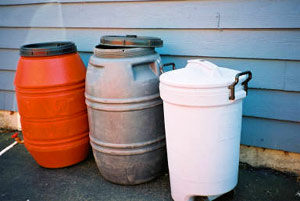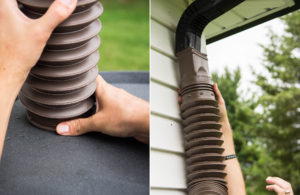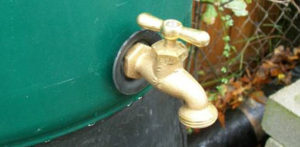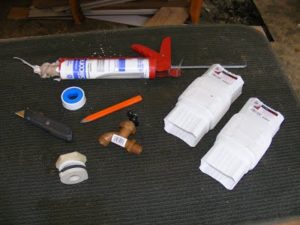How to Create Your Own Rainwater Harvesting System at Home
In a previous blog, we talked about the importance and benefits of collecting rainwater. Unfortunately, far too many people aren’t taking advantage of these great benefits because they think rainwater harvesting has to be a big, complicated operation. On a small scale, it can be as simple as gathering rainwater in a barrel and filtering it.
But, it’s also not difficult to create an incredible rainwater collection system at home. You can use the water for everything from irrigation and watering your garden, to washing your car or even cleaning around the house! Plus, collecting your own water can help you save hundreds of dollars, and is a great way to help the environment. So, if you’re interested in creating your own simple rainwater collection system, keep reading for a step-by-step guide.
- Gather Your Supplies
You can buy rain barrels online, but if you’re on a budget, you can even use a clean plastic trash bin as a perfectly acceptable barrel. For this particular harvesting system, you’ll also need two downspout extenders, a bulkhead fitting, a drain valve and a tube of gutter sealant.
Thankfully, all of these supplies can be found at just about any hardware store, so you shouldn’t have trouble getting started right away!

- Use the Downspout Extenders
The downspout extenders you choose should almost have an accordion-style look to them. This makes it easy to attach them to your downspouts and directly into a hole you’ll cut into the top of the rain barrel. The hole should be just big enough for the extender to fit in snugly.

- Secure the Spout
Use the bulkhead fitting, the drain valve and the gutter sealant to make sure the valve at the bottom of your barrel stays in place. Again, you’ll want to create a hole near the bottom part of the barrel that’s big enough for the valve, but not so big that it will fall out over time. The gutter sealant will really help to keep it in place, so make sure you’re generous with how much you use surrounding the valve.

- Easy Storage
Keep in mind that this is one of the simpler solutions for collecting rain water. You should always have some sort of screen or filtration device attached to your rain barrel if you plan on using it for things like washing dishes or other uses within the home. If you’re collecting water from your gutters, things like leaves and other debris can create problems if you’re not cleaning them regularly.
The best part about this system is that it’s easy to use and easy to store. In the winter months, you can remove the downspout extenders and store the rain barrel away. There are no complicated systems or pipes to worry about. It’s a great way to get started collecting rainwater that would otherwise literally be sliding down your gutters.
We hope this simple plan for rainwater collection will help you to get started on doing your part for the environment right away. Spring is in the air, and it’s the perfect time to create a simple collection system of your own. Once you’ve mastered the basics, you may even find that you’re excited to build an even bigger and better system!





